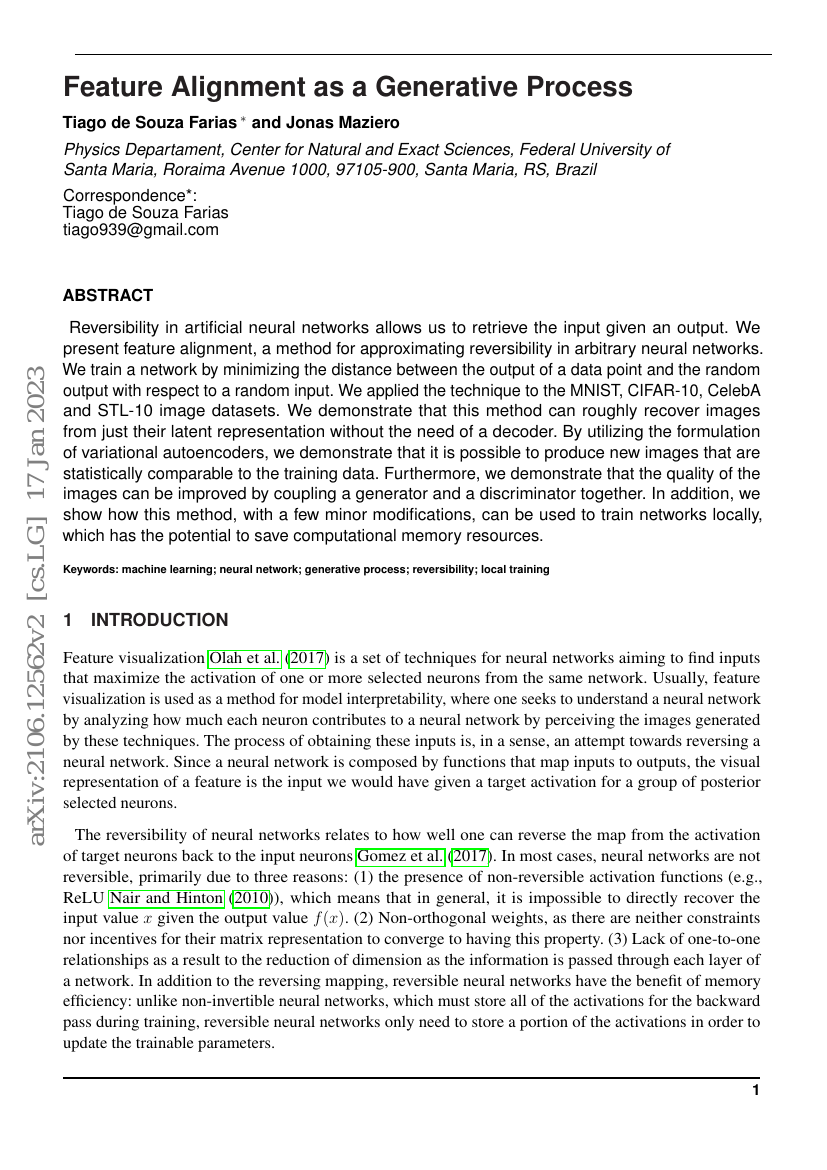Command Palette
Search for a command to run...
Tiago de Souza Farias Jonas Maziero

Abstract
Reversibility in artificial neural networks allows us to retrieve the input given an output. We present feature alignment, a method for approximating reversibility in arbitrary neural networks. We train a network by minimizing the distance between the output of a data point and the random output with respect to a random input. We applied the technique to the MNIST, CIFAR-10, CelebA and STL-10 image datasets. We demonstrate that this method can roughly recover images from just their latent representation without the need of a decoder. By utilizing the formulation of variational autoencoders, we demonstrate that it is possible to produce new images that are statistically comparable to the training data. Furthermore, we demonstrate that the quality of the images can be improved by coupling a generator and a discriminator together. In addition, we show how this method, with a few minor modifications, can be used to train networks locally, which has the potential to save computational memory resources.
Code Repositories
Benchmarks
| Benchmark | Methodology | Metrics |
|---|---|---|
| image-generation-on-celeba-64x64 | Feature Alignment | FID: 128.35 |
| image-generation-on-mnist | Feature Alignment | FID: 37.50 |
Build AI with AI
From idea to launch — accelerate your AI development with free AI co-coding, out-of-the-box environment and best price of GPUs.